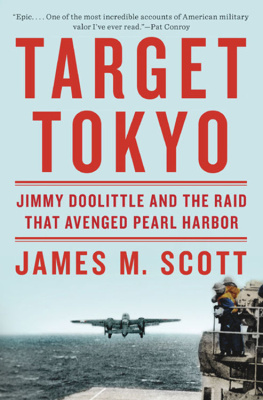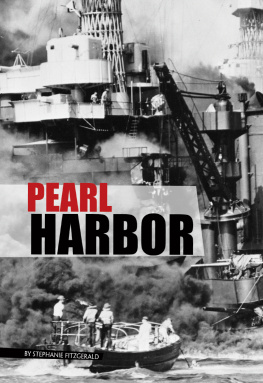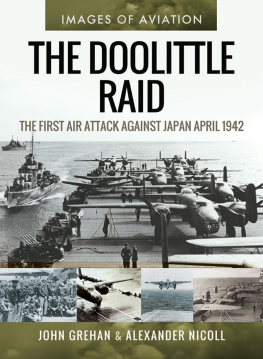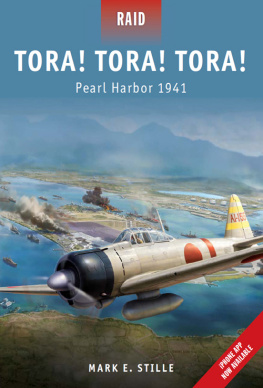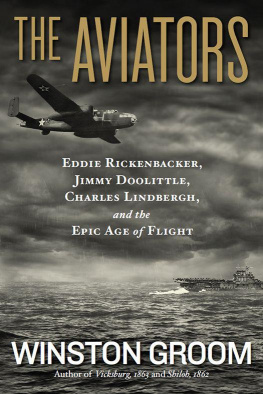Doolittle James Harold - Target Tokyo : Jimmy Doolittle and the raid that avenged Pearl Harbor
Here you can read online Doolittle James Harold - Target Tokyo : Jimmy Doolittle and the raid that avenged Pearl Harbor full text of the book (entire story) in english for free. Download pdf and epub, get meaning, cover and reviews about this ebook. City: Japan--Tokyo., Tokyo (Japan), year: 2015, publisher: W. W. Norton & Company, genre: History. Description of the work, (preface) as well as reviews are available. Best literature library LitArk.com created for fans of good reading and offers a wide selection of genres:
Romance novel
Science fiction
Adventure
Detective
Science
History
Home and family
Prose
Art
Politics
Computer
Non-fiction
Religion
Business
Children
Humor
Choose a favorite category and find really read worthwhile books. Enjoy immersion in the world of imagination, feel the emotions of the characters or learn something new for yourself, make an fascinating discovery.
- Book:Target Tokyo : Jimmy Doolittle and the raid that avenged Pearl Harbor
- Author:
- Publisher:W. W. Norton & Company
- Genre:
- Year:2015
- City:Japan--Tokyo., Tokyo (Japan)
- Rating:5 / 5
- Favourites:Add to favourites
- Your mark:
Target Tokyo : Jimmy Doolittle and the raid that avenged Pearl Harbor: summary, description and annotation
We offer to read an annotation, description, summary or preface (depends on what the author of the book "Target Tokyo : Jimmy Doolittle and the raid that avenged Pearl Harbor" wrote himself). If you haven't found the necessary information about the book — write in the comments, we will try to find it.
The dramatic account of one of Americas most celebratedand controversialmilitary campaigns: the Doolittle Raid.
In December 1941, as American forces tallied the dead at Pearl Harbor, President Franklin Roosevelt gathered with his senior military counselors to plan an ambitious counterstrike against the heart of the Japanese Empire: Tokyo. Four months later, on April 18, 1942, sixteen U.S. Army bombers under the command of daredevil pilot Jimmy Doolittle lifted off from the deck of the USS Hornet on a one-way mission to pummel the enemys factories, refineries, and dockyards and then escape to Free China. For Roosevelt, the raid was a propaganda victory, a potent salve to heal a wounded nation. In Japan, outraged over the deaths of innocent civiliansincluding childrenmilitary leaders launched an ill-fated attempt to seize Midway that would turn the tide of the war. But it was the Chinese who suffered the worst, victims of a retaliatory campaign by the Japanese Army that claimed an estimated 250,000 lives and saw families drowned in wells, entire towns burned, and communities devastated by bacteriological warfare.
At the center of this incredible story is Doolittle, the son of an Alaskan gold prospector, a former boxer, and brilliant engineer who earned his doctorate from MIT. Other fascinating characters populate this gripping narrative, including Chiang Kai-shek, Lieutenant General Joseph Vinegar Joe Stilwell, and the feisty Vice Admiral William Bull Halsey Jr. Here, too, are indelible portraits of the young pilots, navigators, and bombardiers, many of them little more than teenagers, who raised their hands to volunteer for a mission from which few expected to return. Most of the bombers ran out of fuel and crashed. Captured raiders suffered torture and starvation in Japans notorious POW camps. Others faced a harrowing escape across Chinavia boat, rickshaw, and footwith the Japanese Army in pursuit.
Based on scores of never-before-published records drawn from archives across four continents as well as new interviews with survivors, Target Tokyo is World War II history of the highest order: a harrowing adventure story that also serves as a pivotal reexamination of one of Americas most daring military operations.
16 pages of illustrationsDoolittle James Harold: author's other books
Who wrote Target Tokyo : Jimmy Doolittle and the raid that avenged Pearl Harbor? Find out the surname, the name of the author of the book and a list of all author's works by series.

